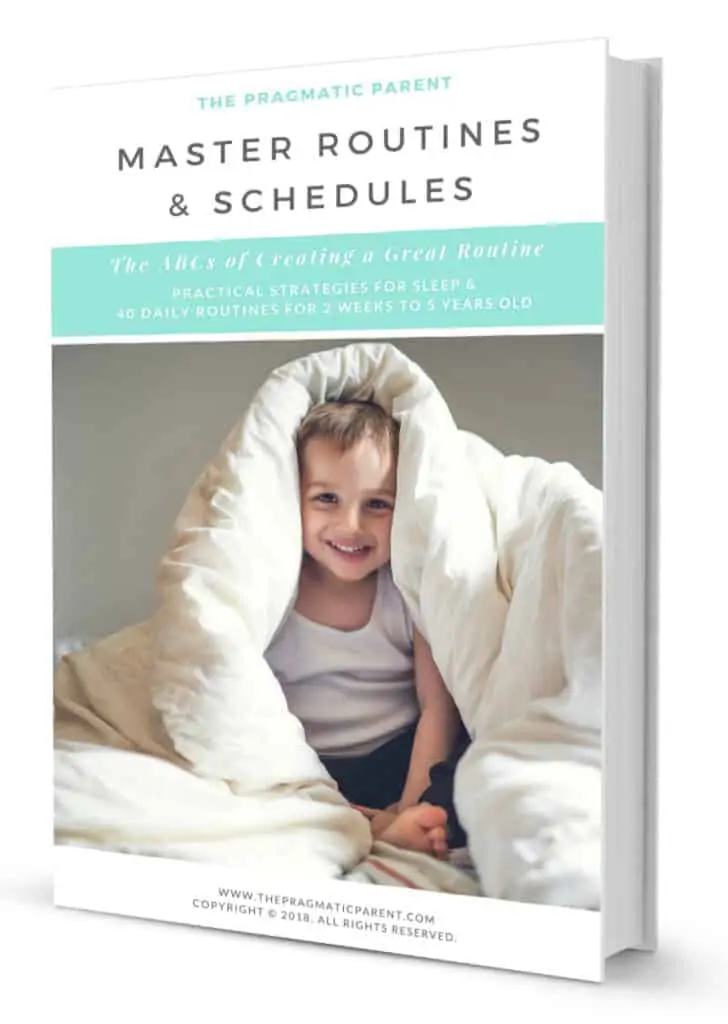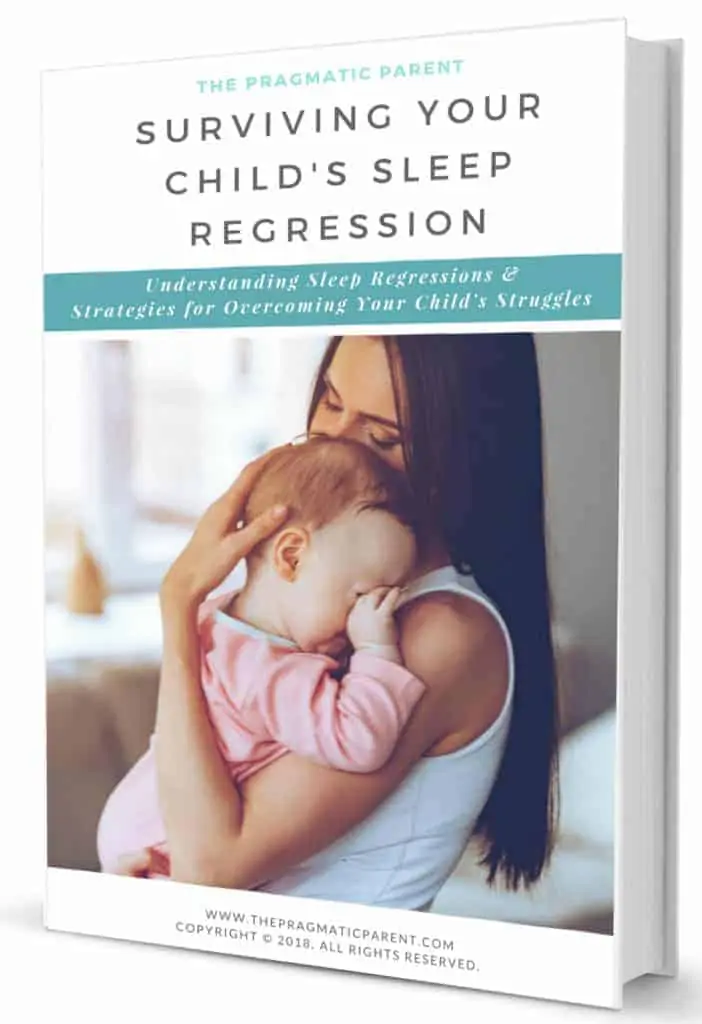Babies cry a lot – it’s their only means of communication to tell you they’re hungry, tired, need changed and many other things. Figuring out how to calm a fussy baby means going through this fussy baby checklist to discover what your baby is trying to tell you. Obvious and not-so-obvious reasons why your baby is fussy and how to calm a fussy baby. Learning to address your baby’s needs quickly with these tips on how to calm a fussy baby.
Why Babies Cry & How to Soothe Them
As I’m sure you now know by now, babies cry a lot. It’s their only way of communication with those around them when they’re hungry, tired, need changed or wants to be held. These are the obvious reasons why your baby is fussing, but what about the not-so-obvious reasons your baby won’t stop crying?
Figuring out how to soothe a fussy baby is a step-by-step process of trying each of these tried and true tips to see what your baby is trying to tell you.
Once you figure out what your baby needs, you’ll learn what their distinct cries mean and can more quickly address his needs and the fussiness will dissipate.
As a Mom of three kids, I’ve had my fair share of fussy babies and moments. My son was the fussiest of all my babies until we found he liked to gently bounced in our arms on a giant yellow exercise ball until he settled. The comfort of being held and motion were exactly what he needed.
By the time I had my third child, I had discovered the short list of tips and secrets to soothing and calming even the fussiest of newborns. These are my tried and true tips for helping your fussy baby settle down.
How to Calm a Fussy Baby: Tips for Parents & Caregivers
Your Baby is Crying to be Fed
Check to see if your baby is hungry. Allow him to feed freely, taking breaks to burp and ensure he’s not holding onto any air. Keep track of feeding times and look for familiar signs he’s hungry. This could look like he’s bringing his hands to his mouth, turn his head for milk, or lip smacking.
Check to See if It’s Time for a Diaper Change
Check the diaper to see if a diaper change is needed. During the first few months of life, babies require 8 – 16 diaper changes a day!
Babies Crave Movement
Your baby spent a lot of time in your tummy where he was moving a lot, so lying or being held for long periods of time may feel uncomfortable and unfamiliar. A lot of babies find great comfort in movement because it reminds them of being in the womb.
- Walk around with your baby in a baby carrier. Allow for skin to skin contact for even more comfort.
- Rock your baby side to side or in a rocking chair
- Baby swings are rhythmic and offer variable side-to-side and front-to-back swinging positions, you’ll just need to find what your baby is most comfortable with.
- Jump in the car or push your baby around in a stroller. The motion of movement will lull your baby to sleep.
No Noise Is No Good
When your baby was in the womb, he had constant noise enveloping him. As a baby outside of the womb, you can use devices to create these familiar sounds and help soothe and calm your fussy baby.
- White Noise machine (we have three of these white noise machines in our house, we love them!)
- Portable white noise machine (great for the car seat or on a walk – I used to velcro this particular one to the carseat and it worked like magic!)
- Fan
- Soft Music
- Radio
- Download a White Noise App on your phone
- Vacumn
- Make a shushing noise, louder than your baby’s cry to soothe the fussiness away
Babies Like to Be Swaddled for Familiar Comfort
In the womb, your baby was snuggly held and will like the familiar feel of being swaddled and held tightly (not too tightly though, especially around his hips.) Try wrapping your baby in a thin swaddle which won’t make him overheat. The Aden & Anais swaddles are the perfect light-weight swaddle to use all year round and I always kept one in my diaper bag to use as a light cover, swaddle or breathable blanket to drape over the carseat when we were out.
Swaddle Blankets with Velcro closures make swaddling quick and easy.
If your baby is craving a snug wrap but wants to be close to you, you can try kangaroo care which means you undress and place your baby on your chest so there is skin-to-skin contact, and then wrap both of yourself up snuggly with a soft blanket.
Another option is using a soft baby wrap where they’ll be close to you, can hear your heartbeat, and it’s a comfortable darkened place to snooze.
PS – Check out all the free baby items (like a baby sling or baby wrap carrier) that you might not already have.
Baby Digestion Can Cause Baby to Be Fussy
Holding your baby in an upright position, especially after eating can help with digestion, reflux and tummy issues. Also, holding your baby in your arms on his left side can help support digestion.
Overfeeding can also contribute to stomach problems and make him uncomfortable. Feeding on demand especially as baby goes through huge growth spurts in the newborn phase is OK, but overfeeding can happen when you feed more than two hours between feedings.
Food sensitives can also contribute to tummy troubles.
- Breastfeeding Moms may try changing their diet and play around if your baby is less fussy when you stop eating dairy, caffeine, spicy foods, gassy foods like onions, and even high fiber in vegetables and salads.
- Formula fed babies may require a change of formula with alternative ingredients such as non-dairy and soy based.
Spitting up a lot, excessive fussiness after feeding, and even vomiting are all symptoms of gastroesophageal reflux (GER) and requires your Pediatrican’s help.
A Gassy Baby is a Fussy Baby
Gas pain is a very common problem for babies and can be a big source of their fussiness because they’re uncomfortable. Here’s what you can do to help with gas:
- Lay your baby over a boppy pillow or across your lap and gently rub or pat his back
- While your baby is lying on his back, gently move his legs in a bicycle motion
- Check with your doctor about using infant gas drops or gripe water
If your baby is often uncomfortable from gas pains and is mostly eating breastmilk, try eliminating gassy foods (onions, cabbage, large quantities of leafy greens that can cause gas) from your diet for a week to see if this helps.
Ask your pediatrician for permission before you use gas drops.
Soothing a Strong Sucking Need
If your baby isn’t hungry, your baby’s natural need to suck can be satisfied by using a pacifier. According to the American Academy of Pediatrics (AAP), some babies are born with a strong sucking need and will be quickly soothed by a pacifier.
Not to worry though, the AAP says most babies will give up their pacifier on their own by 7 months and if they don’t at this time, there is no developmental harm. (All of mine gave theirs up at 1 year and we have no dental or developmental delays.)
Is Your Baby Too Hot or Too Cold?
A baby who is dressed or wrapped too warmly, or oppositely underdressed for colder weather will cry out because of this. Check to make sure they’re dressed appropriately.
What else? Nothing is Working!!
- Head outside and get fresh air. The change of scenery may be just what you need!
- Try a warm bath.
- Make sure the temperature in your home isn’t too hot or too cold. The ideal inside temperature is 68 degrees Fahrenheit. You can use an indoor monitor to check your baby’s nursery temperature.
- Dim the lights and turn off all stimulation. An overstimulated baby will have a very hard time settled and soothing themselves.
- Check your baby for clothing too tight, strings caught around toes, fingers, body parts, and too confining clothing.
- Give your baby a lotion massage with calming lotion scents such as lavender and vanilla.
Additional Parenting Tools to Help with Sleep & Routines:

Learn how to start creating a routine, establishing wake up and bedtimes, strategies for working through nap transitions, prepping for daylight savings time to keep your routine on track and logging your baby’s sleep patterns… all helping you rock a routine and simplify life when your days flow.
Surviving Your Child’s Sleep Regressions Ebook
Additional Reading on Baby Sleep:
- Bringing Baby Home: How to Survive the First Week Home with Baby
- 10 Gentle Ways to Help Your Child Sleep Through the Night Without Crying It Out
- Comprehensive Sleep Charts & Sleep Guidelines for Infants Through Adolescents
- The Benefits of Having a Daily Routine
- Create an Awesome Routine for Better Sleep Habits
- How to Establish a Peaceful Bedtime Routine for Your Baby
- How to Survive the 18 Month Sleep Regression & 2 Year Sleep Regressions Without Going Crazy
Want even more?
Shop All Parenting Resources
Shop all of our parenting resources from self-regulation tools and managing big emotions to building self esteem and confidence. There are resources for all seasons of life!









Thank you for this helpful and thorough guide. Often when people give advice on how to calm a crying baby, they simply say to check their diaper, feed them, or put them to sleep. However, for some babies, it’s just not this simple.
My daughter has refulx and as a young baby, different things worked at different times to soothe her. Sometimes she just wanted to nurse and nurse. Sometimes she needed a lot of movement (I also bounced on an exercise ball while holding her), and sometimes she was content if I just leisurely walked around the house while holding her.
Every baby is different and once you’re a parent, you have to experiment to find what your baby likes best. But the great news is, even when you’re a new parent, mamas instinctively know what is ultimately best for their babies even if you don’t have all the answers.